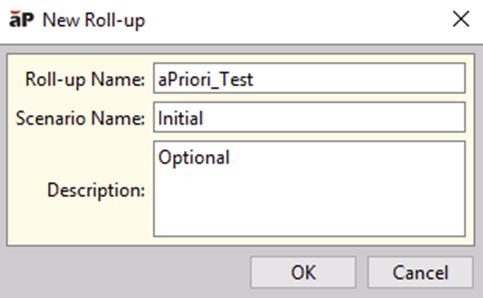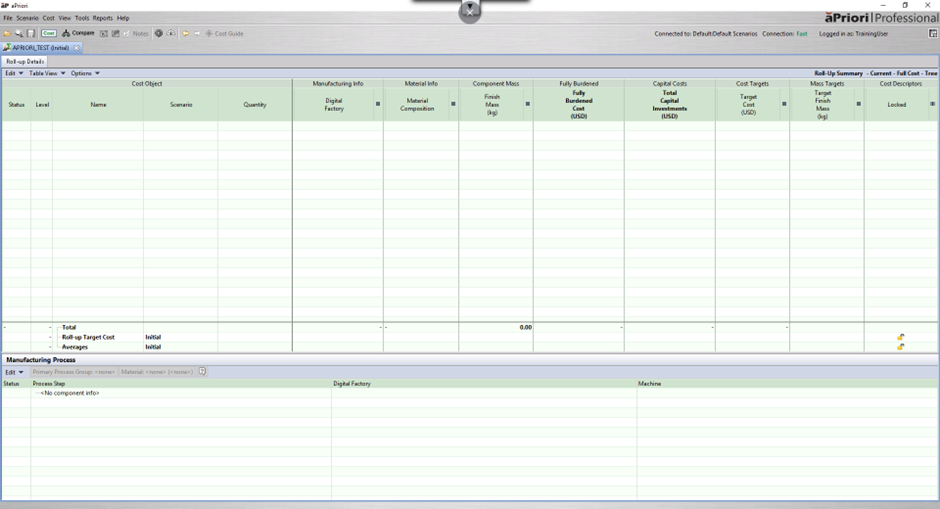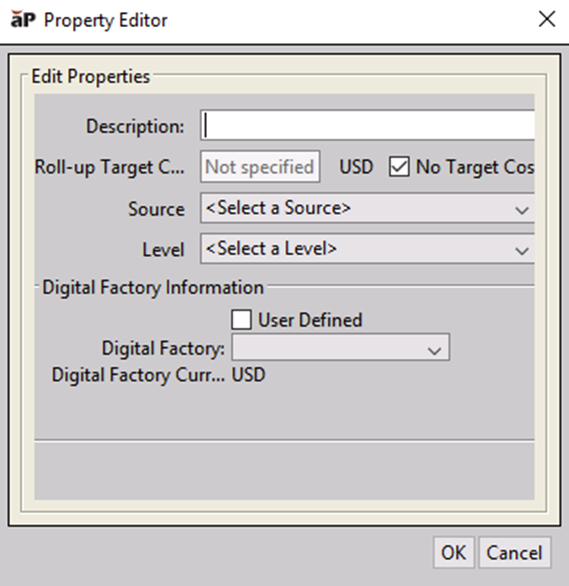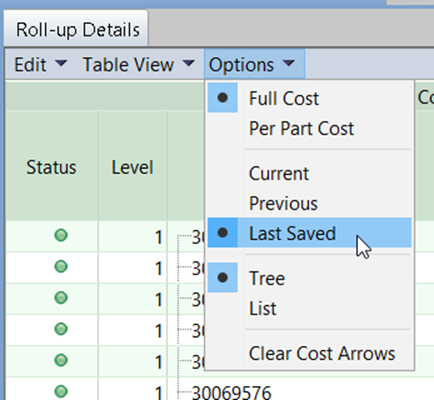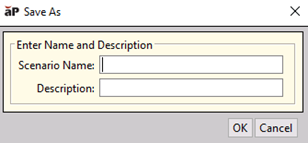Roll-ups are created with a unique name and Digital Factory. The Digital Factory determines the base currency for the roll-up. For more information on Digital Factories, see Select a Digital Factory.
Tip: See also the Perform Static Roll-ups aP Academy training course.
Create Roll-ups
Create a New Roll-up
-
Select File > New Roll-up:
-
Enter the name, scenario name and description for the new roll-up.
In the Scenario Name field, use the default scenario name, or enter a new name to create a scenario with a different name. For more information about scenarios, see Work with Scenarios
-
Click OK.
-
An empty roll-up is displayed.
-
The roll-up is also added to the Open Items tab in the navigation pane.
-
Add a component to a roll-up
-
Double-click the roll-up in the navigation pane.
- Add components to the roll-up:
- Drag a component from the navigation pane to the roll-up.
- Select Edit > Add > Component(s) to display the Search window.
- Enter search criteria in the filter fields and click Find. The list of components that match the filter criteria is displayed.
- Select the component(s) from the list and click OK. The official scenario for each component in an assembly is used for costing by default.
- To use a different scenario for costing, select that specific scenario, rather than the part itself, in the Search window.
- Select Edit > Add > New. You can create and add either a new part, assembly, or roll-up to the active roll-up on. The new component is added to the bottom of the list of roll-up components.
- Right-click an existing roll-up within the active roll-up and select Add > Component(s) or New to access the same menus previously described. The existing or new components are added to the selected roll-up.
The Status column shows the status of a component’s costing:
- Green: costing completed successfully
- Yellow: costing succeeded with a warning
- Red: costing failed
- Asterisk (*): unsaved changes; to save the changes, right-click the component and select Save
When you add a component to a roll-up, the roll-up is visible in the Roll-ups subfolder of the Where Used folder for this component.
Define roll-up properties
-
Double-click a roll-up in the navigation pane.
-
In the roll-up tab, select Edit > Properties. The Property Editor is displayed.
-
You can edit the following properties:
-
Enter a description for the roll-up in the Description field.
- Deselect the No Cost Target checkbox and enter the target cost for the roll-up in the Roll-up Target Cost field.
- Select the source that produced the roll-up from the Source drop-down list.
- Select the category of cost estimate from the Level drop-down list.
-
-
You can edit the following Digital Factory information:
- To select a user-defined Digital Factory
- Check the User-Defined checkbox
- Enter the Digital Factory name in the Digital Factory field
- Select Digital Factory Type and Digital Factory Currency.
- To use a pre-defined Digital Factory
- Clear the User-Defined checkbox
- Select a Digital Factory from the Digital Factory drop-down list. Digital Factory Type and Digital Factory Currency are filled in automatically.
- To select a user-defined Digital Factory
-
Click OK.
Edit Roll-ups
Edit a roll-up
-
Double-click a roll-up in the navigation pane.
-
In the roll-up table, select a component and edit the Manufacturing Process as desired. New cost reflecting the changes is calculated. Red up-arrows indicate values that went up, and green down-arrows indicate values that went down. An asterisk appears next to the component’s name to indicate that there are unsaved changes.
-
To save the changes, right-click the component and select Save.
Edit or Remove a Component
-
Double-click a roll-up in the navigation pane.
-
Right-click the component you want to edit and select Edit Quantity. The Edit Quantity window is displayed.
-
Enter new quantity. Enter 0 to remove the component.
-
Click OK. The costs are updated to reflect the new quantity. Red up arrows indicate values that went up, green down arrows indicate values that went down.
View Roll-up Values
-
To view saved values: In the roll-up tab, select View > Saved Values. The last saved values for the components are displayed without losing any unsaved changes. You cannot edit the saved values.
-
To view current values: in the roll-up tab, select View > Current Values. The changes that have been made since the values were saved are displayed. You can continue editing the current values.
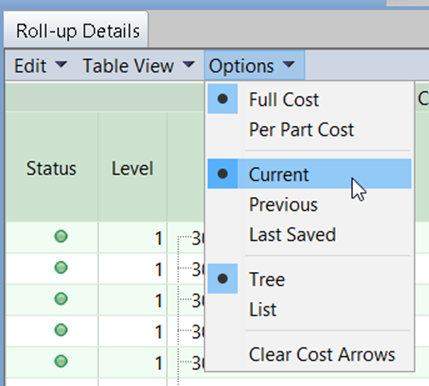
-
To view roll-up components, double-click a roll-up component in the roll-up table or in the navigation pane to open it in a new tab.
Copy Roll-ups
Copy a Roll-up
To copy an entire roll-up table:
-
Double-click a roll-up in the navigation pane.
-
In the roll-up tab, select Edit > Copy Table.
-
The table is copied to the clipboard. You can paste the table into another application such as Microsoft Excel.
Tip: You can also copy a section of a roll-up table: select rows of interest, then copy-and-paste those rows.
Copy a Roll-up Component
You can cut, copy, and paste components from one rollup to a new or existing roll-up. This enables you to create alternative groupings of components for analysis purposes, or to dynamically organize product costs as the product structure evolves.
-
Open a rollup and select one or more components that you want to cut or copy. Use Ctrl + click to select multiple components.
-
Right-click and select Cut or Copy from the context menu.
-
Right-click the destination roll-up in the active roll-up tab or open the destination roll-up tab.
-
Right-click and select Paste from the context menu.
Save a roll-up as a Scenario
-
Right-click a roll-up in the navigation pane and select Save as Scenario to open the Save As window.
-
Enter the Name and Description (optional) for the new scenario.
-
Click OK.
-
The roll-up is saved as a locked (uneditable) scenario.
-
It captures a static version of the roll-up components and costs for later analysis.
-
When a scenario is created, it appears in the Scenarios folder in the navigation pane. For more information, see Work with Scenarios.
-
